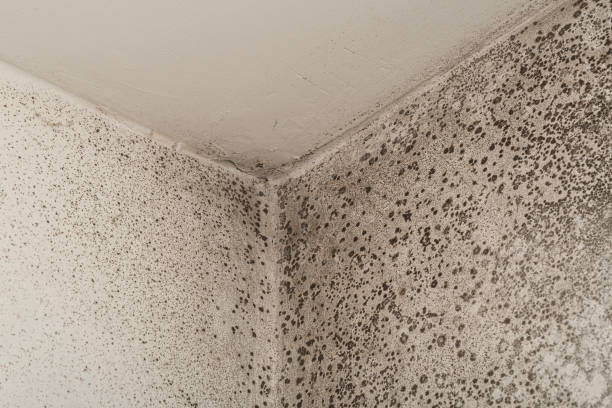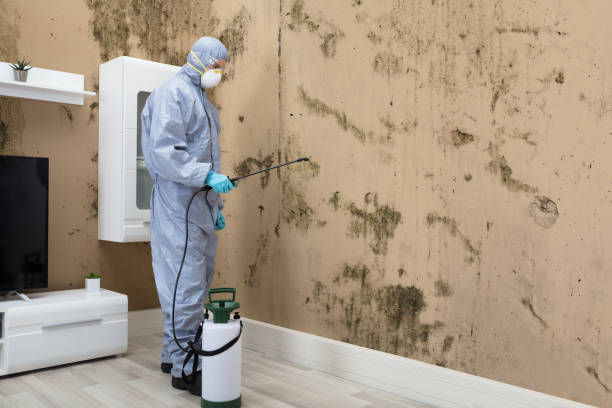Preparing Your Home Before Winter to Combat Mold Growth
- housespecialist
- Mar 6
- 5 min read
As winter approaches, the cold weather can inadvertently create a prime environment for mold growth in homes. Mold thrives in damp, poorly ventilated areas, and winter conditions can exacerbate these issues. Properly preparing your home can help mitigate mold growth and protect your health and property. This blog outlines comprehensive strategies to combat mold growth before the winter season sets in.
Understanding Mold and Its Growth Conditions
Mold is a type of fungus that flourishes in moist environments with poor ventilation. Common household molds can grow on various surfaces, including wood, drywall, and fabric. During winter, homes are often sealed tightly to retain heat, which can trap moisture and create the ideal conditions for mold proliferation. Mold is not only unsightly, but it can also pose significant health risks, such as respiratory issues, allergies, and other serious conditions. For those wondering, does mold grow in winter get expert advice from superior restoration to understand how to effectively manage and prevent mold growth during the colder months.

Inspecting and Repairing Roofs and Gutters
Before winter, it’s crucial to inspect your roof and gutters for any signs of damage or blockages. A leaky roof can allow water to seep into your home, providing a breeding ground for mold. Similarly, clogged gutters can cause water to overflow and penetrate your home's foundation. Ensure all repairs are done promptly and gutters are cleaned thoroughly to prevent water accumulation. Clearing leaves and debris from gutters and downspouts is essential, and consider installing gutter guards to minimize future blockages.
Sealing Doors and Windows
Check all doors and windows for gaps or cracks that can allow moisture to enter your home. Proper sealing with weatherstripping or caulking can help keep out cold air and moisture, reducing the chances of mold growth. Pay special attention to basement windows, as basements are more susceptible to dampness and mold. Applying seals and weatherproofing your home's entry points also enhances energy efficiency, ensuring your home stays warm and dry.
Ensuring Proper Ventilation
Proper ventilation is essential in preventing mold. In the winter months, homes are often closed up tightly, limiting air circulation. To combat this, ensure that your home has adequate ventilation. Use exhaust fans in bathrooms and kitchens to expel moisture-laden air and consider using a dehumidifier to keep indoor humidity levels below 60%. Regularly open windows when weather permits to allow fresh air to circulate. Additionally, ensure attics and crawl spaces are well-ventilated to prevent moisture buildup from condensation.
Insulating Pipes
Frozen pipes can burst and cause water damage, which may lead to mold growth. Insulate pipes, especially those in unheated spaces like basements and attics, to protect them from freezing. Wrapping pipes with insulation material, such as foam pipe covers or using heat tape, can prevent them from bursting, thereby averting potential water leaks that contribute to mold development. Regularly check for any signs of wear and tear on insulation material and replace as needed.
Addressing Basement Moisture
Basements are notorious for being damp and prone to mold growth. Take preventive measures by ensuring your basement is properly waterproofed. Check for and seal any cracks in walls and floors. Install a sump pump if necessary to deal with excess water. Also, use a dehumidifier in the basement to maintain low humidity levels, further inhibiting mold growth. Improving drainage around your home's foundation can also help, such as extending downspouts and grading the soil to direct water away from the house.
Cleaning and Decluttering
Mold spores can attach themselves to dust, clutter, and organic materials such as fabric and cardboard. Regular cleaning and decluttering can help reduce surfaces where mold can grow. Clean areas that are often overlooked, including under furniture and in corners. Store items in plastic bins instead of cardboard boxes to prevent mold colonization. Regularly wash and dry fabrics, including curtains and upholstery, to keep them mold-free. By maintaining a clean and organized home, you can reduce the likelihood of mold taking hold.
Using Mold-Resistant Products
If you are planning any home renovations before winter, consider using mold-resistant products. Mold-resistant drywall and paint contain chemicals that inhibit mold growth. These products can be particularly useful in areas prone to moisture, such as bathrooms, kitchens, and basements. Installing these materials can provide an added layer of protection against mold. Additionally, consider using mold-resistant sealants around sinks, bathtubs, and other areas where water is present. These products help create a barrier to moisture penetration.

Monitoring Humidity Levels
Keeping an eye on humidity levels within your home is crucial in mold prevention. The ideal indoor humidity level is between 30-50%. Use a hygrometer to measure humidity and make use of a dehumidifier as necessary. If you notice condensation on windows or walls, it may be an indicator of high humidity levels, prompting further investigation and action to reduce moisture. In particularly humid areas, such as basements or bathrooms, running a dehumidifier regularly can be an effective preventive step.
Regular Home Maintenance Checks
An often-overlooked aspect of mold prevention is regular home maintenance. Routine checks and prompt repairs can prevent minor issues from becoming major problems. Inspect areas prone to moisture, such as under sinks and around appliances like washing machines and refrigerators. Ensure that caulking around showers, tubs, and sinks is intact to prevent water infiltration. Address leaks and plumbing issues immediately to prevent standing water and dampness that mold thrives on. Understanding mold growth factors in winter, such as increased indoor humidity and poor ventilation, can help homeowners take targeted actions to keep their homes mold-free.
Landscaping and Exterior Drainage
Proper exterior landscaping and drainage can significantly reduce the risk of mold by ensuring that water flows away from your home. Evaluate your yard's grading to ensure it slopes away from the foundation. Maintain a gap between any mulch or plant material and your home’s foundation to allow proper air circulation and avoid excess moisture build-up. Consider installing French drains or other drainage systems if you live in a particularly wet area, to divert water away from your home effectively.
Conclusion
Preparing your home before winter is crucial in combating mold growth. By understanding the conditions that contribute to mold development and taking proactive measures, you can protect your home and health. Start with inspecting and repairing roofs and gutters, sealing doors and windows, and ensuring proper ventilation. Insulate pipes and address basement moisture, while maintaining regular cleaning and decluttering routines. Consider using mold-resistant products in renovations for added protection. Monitor humidity levels and conduct regular home maintenance checks to address any issues promptly. Enhancing your exterior drainage can also play a significant role in keeping your home mold-free.



Comments